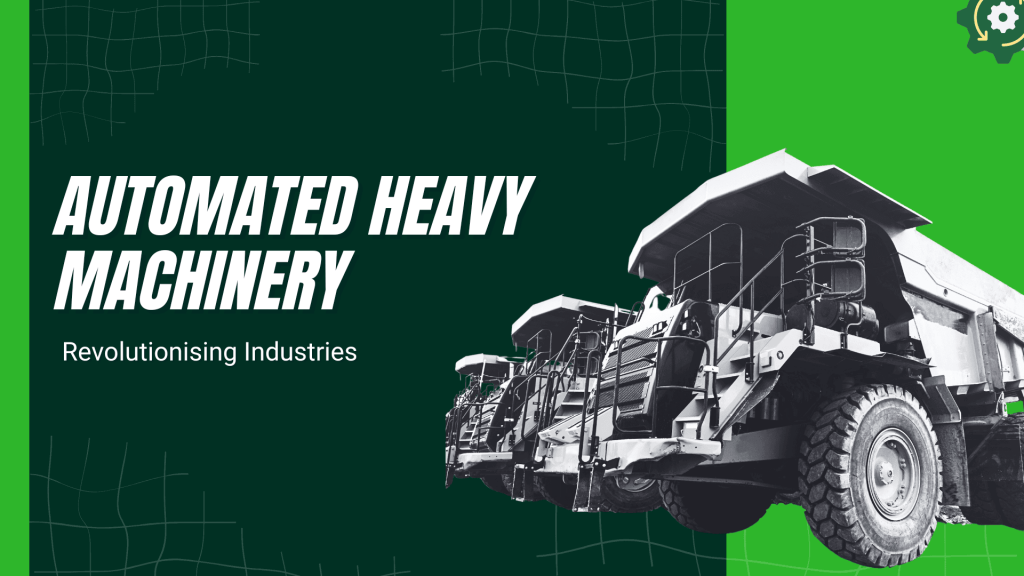
The world is evolving rapidly. What used to take years can now be done in hours! And not just by any miracle but by man-made technology. The construction business is not left behind in this matter as automation in construction industry has been adopted. Technological development has far surpassed the traditional gear, tools, and even machinery. Let’s have a look at how the construction industry has benefited from automated machinery.
Automated Heavy Machinery
Automated Guided Vehicles (AGVs)
As the name suggested, these are vehicles that do not require any human interventions. They have their paths and routes fixed on which they travel and help the workflow. Mostly, these AGVs are used to supply or transport raw materials from one spot to another at a construction site. The advantages of using such AGVs are phenomenal. Reduced labor costs and minimization of errors are the top advantages of these machines.
Automated Cranes
Loaded with advanced sensors and high-tech control systems, Automated Cranes have moved the construction industry, literally! With ease, these miracle machines lift heavy weights without any safety failure. Mostly these cranes are seen flawlessly working at ports, manufacturing plants, and most importantly, construction sites. With no workers to control this Automated Crane, the labor costs are reduced significantly.
Robotic Excavators
Robotic Excavators have crawled the earth for long. They used to be controlled by an operator remotely earlier. But as time passed by, even that has changed. Using GPS technology, highly accurate sensors, and sophisticated algorithms, these machines can do what humans get tired of doing all on their own. Fun fact, it was a Robotic Excavator that was used to clear the debris at the Chernobyl Nuclear Power Plant. This will give a better idea of how capable these machines are.
Automated Forklifts
Widely used in warehouses, distribution centers, and manufacturing facilities, Automated forklifts have gifted them efficiency and safety. They can carry heavy goods for longer distances without any human errors. The success of these machines has landed them a sweet spot even at many construction sites worldwide.
Benefits of Automation in construction industry
Enhanced Safety
As there is no human or labor to control these types of machinery, the chances of human errors are totally out of the picture.
Increased Productivity
A machine can never get tired, thus this increases the productivity of tasks at hand.
Cost Efficiency
As there is no operator to control these types of machinery, the labor costs are significantly reduced.
Optimized Resource Utilization
With better use of materials, energy, and time, Automated Machinery leads to greater efficiency and sustainability.
Improved Quality
The results are of much higher quality as there is no room for error in any manner. This not only increases profits but helps an industry to gain goodwill as well.
Data Insights
They record and generate valuable data that are used for continuous development and improvement.
Conclusion
Automated heavy machinery is the backbone of many industries now. Many big-time construction companies are now relying on these beats to work tirelessly for them and add to their profits. As technology advances, more such machines will enter the construction industry and reshape the world as we know it.
FAQs
1. What is automation in the construction industry?
Automation in the construction industry refers to the integration of advanced technology into heavy machinery and processes to streamline operations, enhance safety, and improve efficiency. This includes the use of automated guided vehicles, robotic excavators, automated cranes, and automated forklifts, among others.
2. How does automation in construction industry improve safety?
Automation reduces the reliance on human operators in hazardous environments, minimizing the risk of accidents and injuries. With machines performing tasks autonomously, workers are less exposed to dangerous conditions, such as operating heavy equipment or working in high-risk areas.
3. What are some examples of automated heavy machinery used in construction?
Examples of automated heavy machinery include Automated Guided Vehicles (AGVs), which transport materials within facilities autonomously; robotic excavators, which automate excavation tasks using sensors and GPS technology; automated cranes, which lift and move heavy loads with precision; and automated forklifts, which handle material transportation in warehouses and distribution centers.
4. How does automation contribute to increased productivity in construction?
Automation ensures continuous operation with precision and consistency, maximizing output and minimizing downtime. With machines handling repetitive tasks efficiently, workers can focus on more complex and strategic aspects of construction projects, leading to overall increased productivity.
5. What are the cost benefits of implementing automation in construction?
By reducing labour costs, optimizing resource utilization, and minimizing errors, automation improves the overall cost-effectiveness of industrial operations. With fewer labour dependencies and increased efficiency, businesses can achieve significant cost savings over time.



